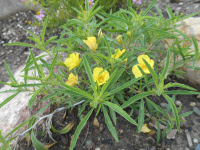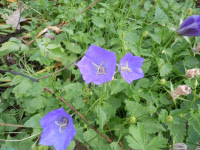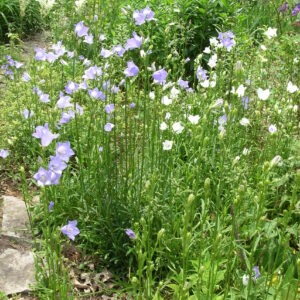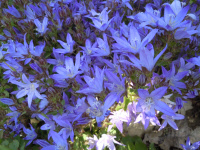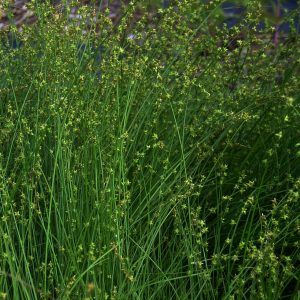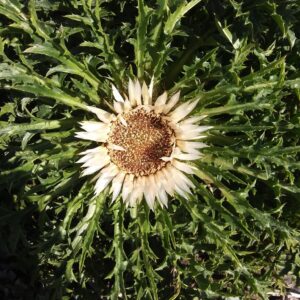Perennials & Biennials
Showing 97–104 of 511 results
-
Calylophus serrulatus Yellow sundrops, Shrubby evening primrose Z 4-9
Lemon yellow silky petals bloom late spring to early fall on this tough-as-nails native
OUT OF STOCK
Lemon yellow silky petals bloom late spring to early fall on this tough-as-nails native
Size: 9-18” x 12-15”
Care: sun in well-drained soil, drought tolerant
Native: Great Plains: Central Canada to TX, Michigan to Montana, WI native1st described in 1818 by Thomas Nuttall, English planthunter who collected hundreds of “new” plants in North America. Caly is Greek for calyx; lophos for “the back of the neck; crest of a hill or helmet” serrulatus means “minutely serrate” or “saw-toothed” describing the leaf margins.
-
Campanula carpatica Tussock bellflower, Carpathian bellflower Z 3-8
In summer blue, violet or white bells
In summer blue, violet or white bells, excellent at front of border.
Size: 12” x 12-24”
Care: Sun moist well-drained soil, tolerant of Walnut toxicity
Native: Carpathian mountains in central Europe
Awards: England’s Royal Horticultural Society Award of Merit.Campanula is Latin meaning little bell. In 1629 Parkinson described campanulas as “cherished for the beautie of their flowers…” Young roots were eaten in “sallets.” Introduced to European gardens from the Carpathian Mountains in 1774. Sold by McMahon’s Philadelphia nursery in the early 1800’s. Probably cultivated by Jefferson at Monticello.
-
Campanula ochroleuca Bellflower Z 4-7
Ivory, rocket-shaped buds open to bell-like blossoms covered with fine hairs with five, flared petal-ends surrounding ivory stamens and pistil along erect to arching stems. Blooms June-July on slow-spreading, clump-forming rosettes of hairy, heart-shaped or triangular leaves.
OUT OF STOCK
Ivory, rocket-shaped buds open to bell-like blossoms covered with fine hairs with five, flared petal-ends surrounding ivory stamens and pistil along erect to arching stems. Blooms June-July on slow-spreading, clump-forming rosettes of hairy, heart-shaped or triangular leaves.
Size: 12-18” x 12-15”
Care: sun to part shade in moist well-drained to well-drained soil
Native: Caucasus
Wildlife Value: provides pollen to bees and butterflies, rabbit resistantFirst described in a published document in 1949.
-
Campanula persicifolia Peach-leafed bellflower Z 3-8
In May and June outfacing bells blossom along the 2-3' stems in white or clear, sky blue.
In May and June outfacing bells blossom along the 2-3′ stems in white or clear, sky blue.
Size: 24-36" x 12"
Care: Sun in moist well-drained soil, tolerant of Walnut toxicity.
Native: So. Europe and north and west AsiaBoth white and blue varieties grew in English gardens before 1580. Cultivated in America since the 1700’s.
-
Campanula poscharskyana Adriatic bellflower Z 4-8
Riot of lilac colored star-shaped blooms May - June
Riot of lilac colored star-shaped blooms May – June
Size: 6" X 24" spreading
Care: Sun to part shade in moist well-drained soil.
Native: Mountains of Eastern Europe
Awards: Top rated by the Chicago Botanic Garden. Elisabeth Carey Miller Botanical Garden Great Plant PickCampanula is Latin meaning “little bell.” Collected before 1822. Named for 19th century German plantsman, Gustav Poscharsky.
-
Campanula rotundifolia Harebell, Bluebell of Scotland Z 3-8
Its delicate appearance conceals its hardy constitution. Dainty bluish-lilac bells to 12” stems on bushy round ground-hugging foliage. Blooms from June to October. Perfect for rock gardens and borders.
Its delicate appearance conceals its hardy constitution. Dainty bluish-lilac bells to 12” stems on bushy round ground-hugging foliage. Blooms from June to October. Perfect for rock gardens and borders.
Size: 9-12" x 12"
Care: Sun to part shade in moist well-drained soil
Native: Europe, Siberia and North America, Wisconsin native
Wildlife Value: Walnut tolerantLakota ate the leaves raw and cooked and made an infusion of the roots to remedy earaches. Sir Walter Scott immortalized the Bluebell of Scotland in Lady of the Lake. Also a subject of Emily Dickinson’s poetry.
-
Carex rosea Rosy sedge, Stellate sedge PERENNIAL GRASS Z 3-9
Mounds of thinnest of medium green leaves mingled with stems with star shaped seed clusters in May-June
OUT OF STOCK
Mounds of thinnest of medium green leaves mingled with stems with star shaped seed clusters in May-June.
Size: 12” x 10”
Care: part shade and shade in moist well-drained soil
Wildlife Value: No. Dakota south to TX & east incl. WI, New Brunswick and Nova Scotia.
Awards: Great Plants for the Great Plains Grass of the Year 2020Collected before 1811.
-
Carlina acaulis ssp. simplex Silver thistle, Weather thistle Z 3-9
Wide, white saucer flowers above silvery thistle foliage, open on dry days, closed in the evenings and on rainy days. July- September
Wide, white saucer flowers above silvery thistle foliage, open on dry days, closed in the evenings and on rainy days. July- September
Size: 6-12” x 12”
Care: sun in well-drained soil.
Native: Southern & Eastern Europe
Wildlife Value: attracts honey-beesThe Genus comes from Charles (Carolus). According to medieval folklore Charlemagne used this root to cure the ills of his troops.

